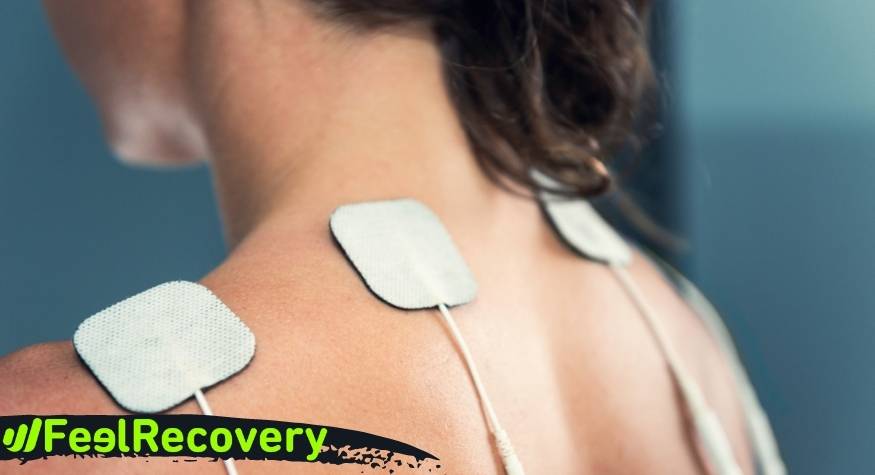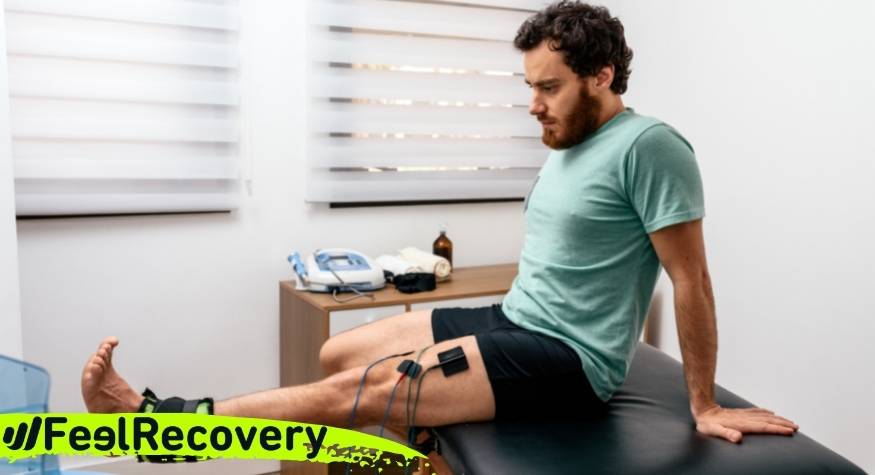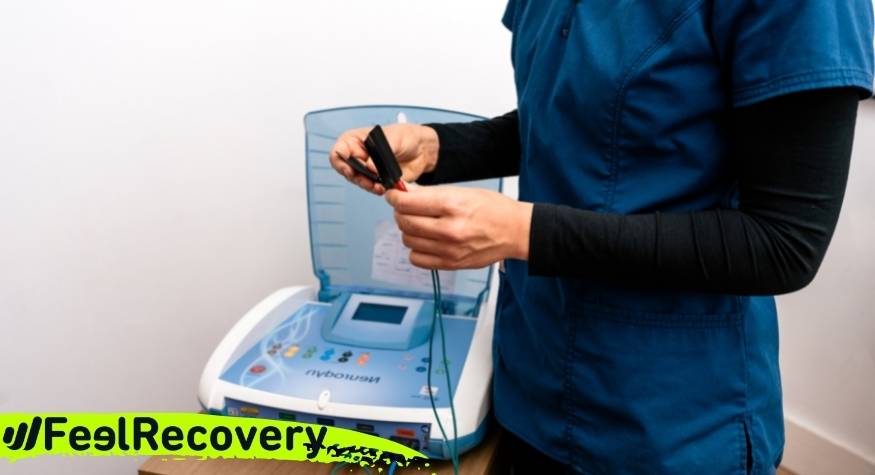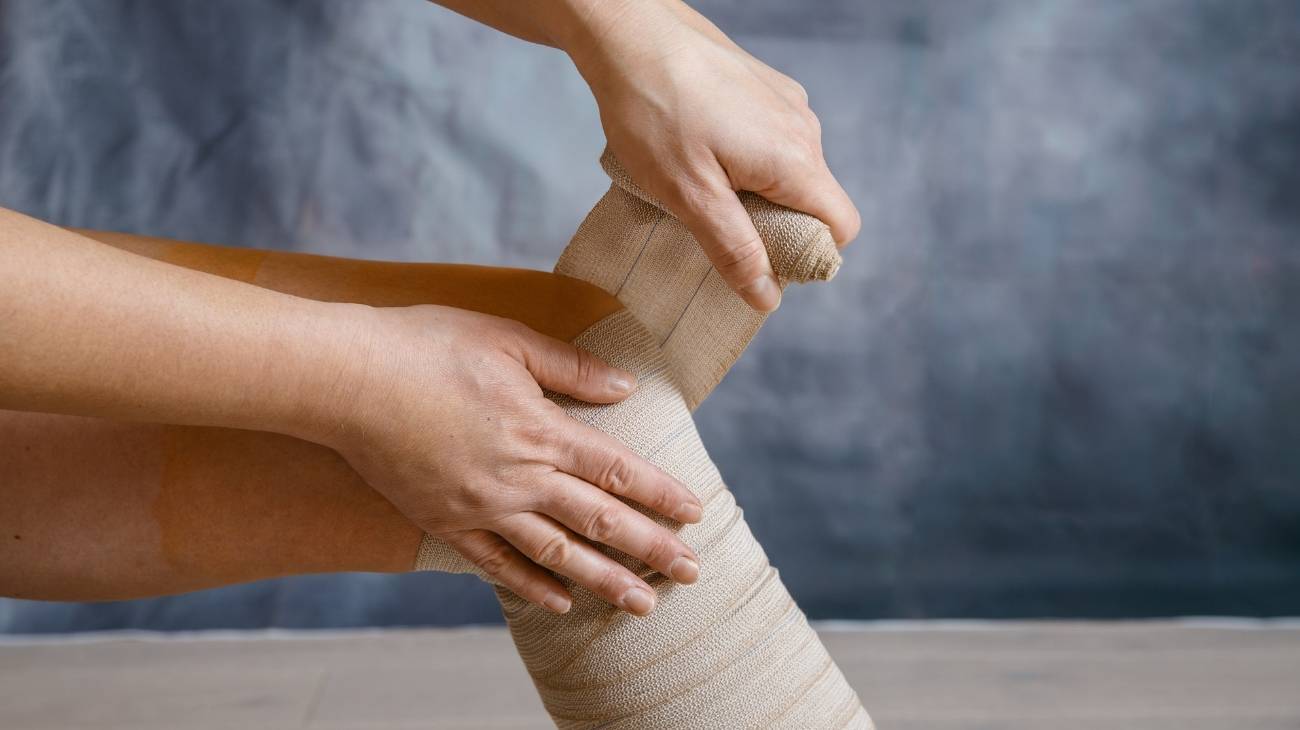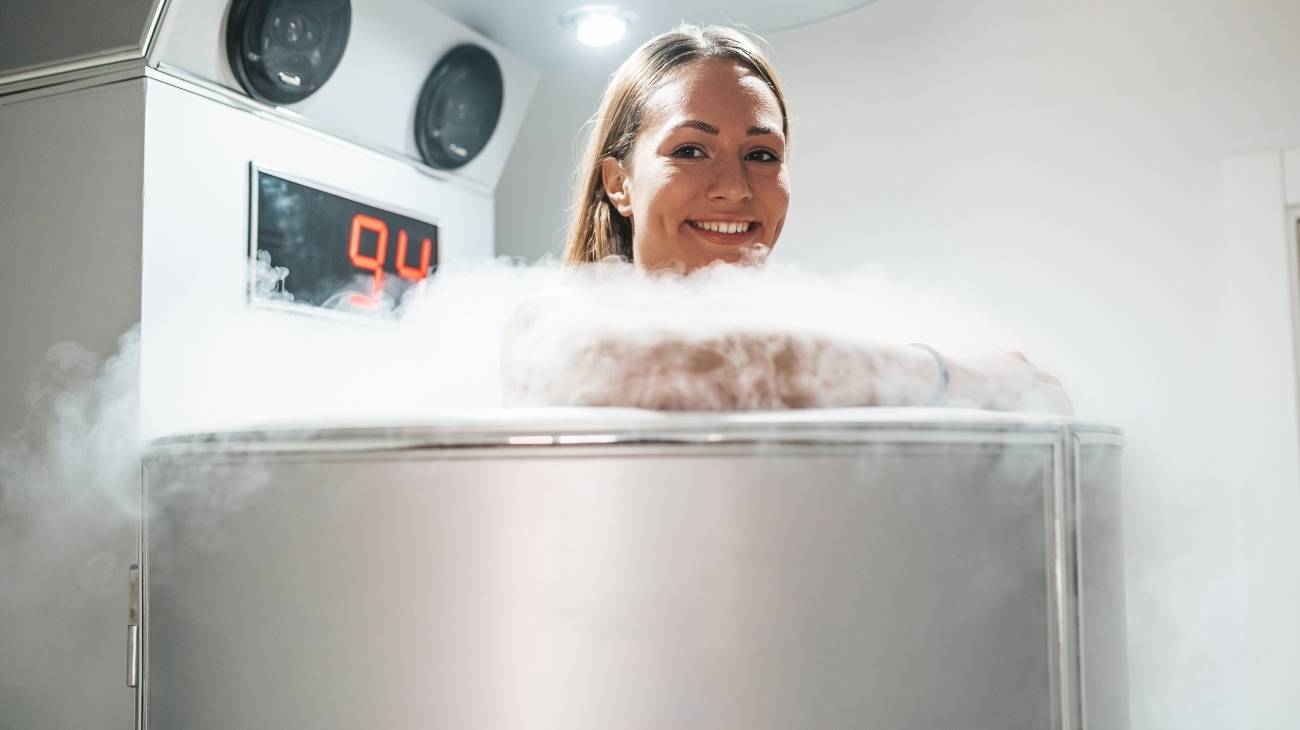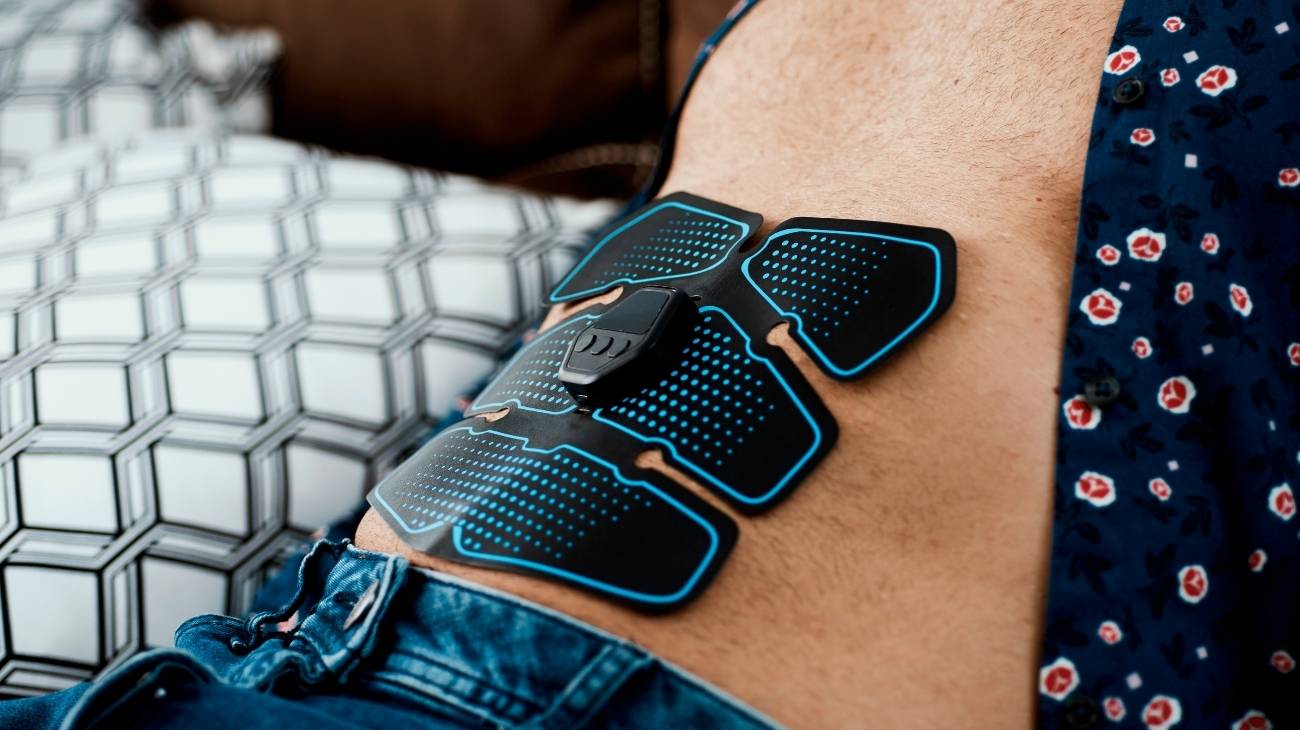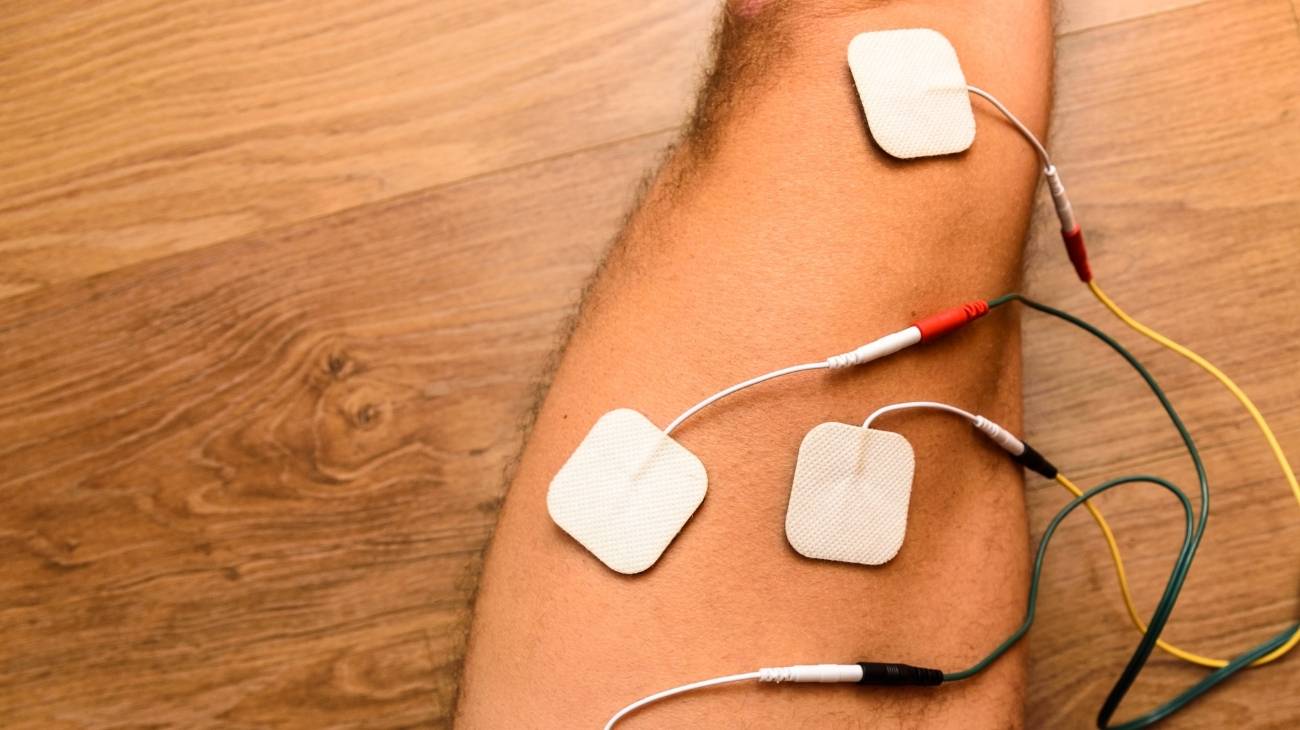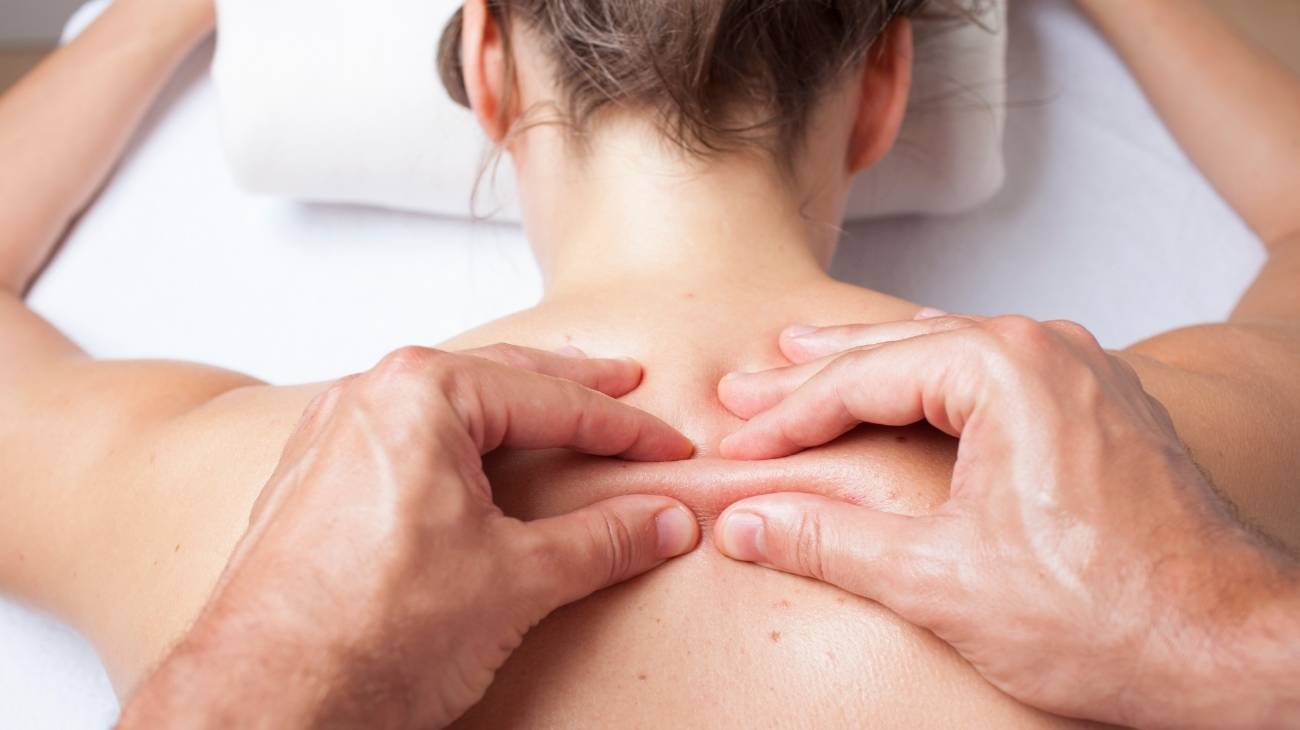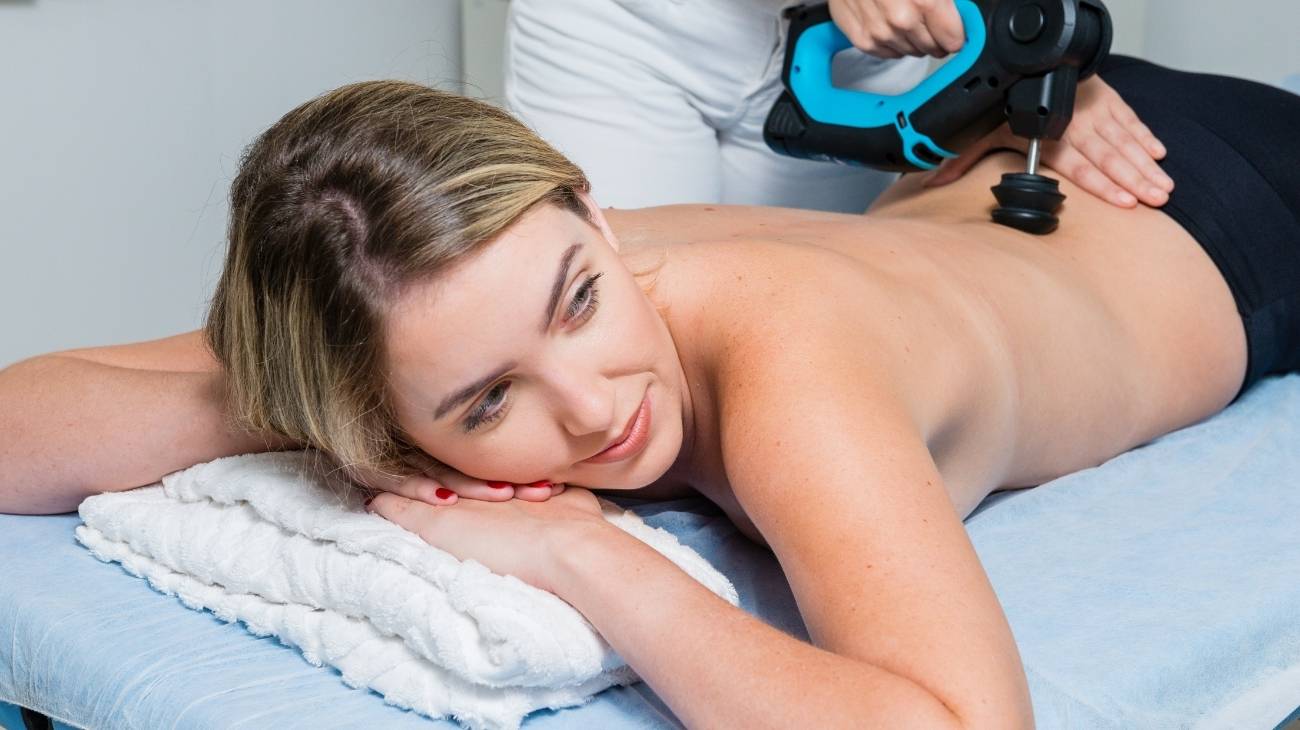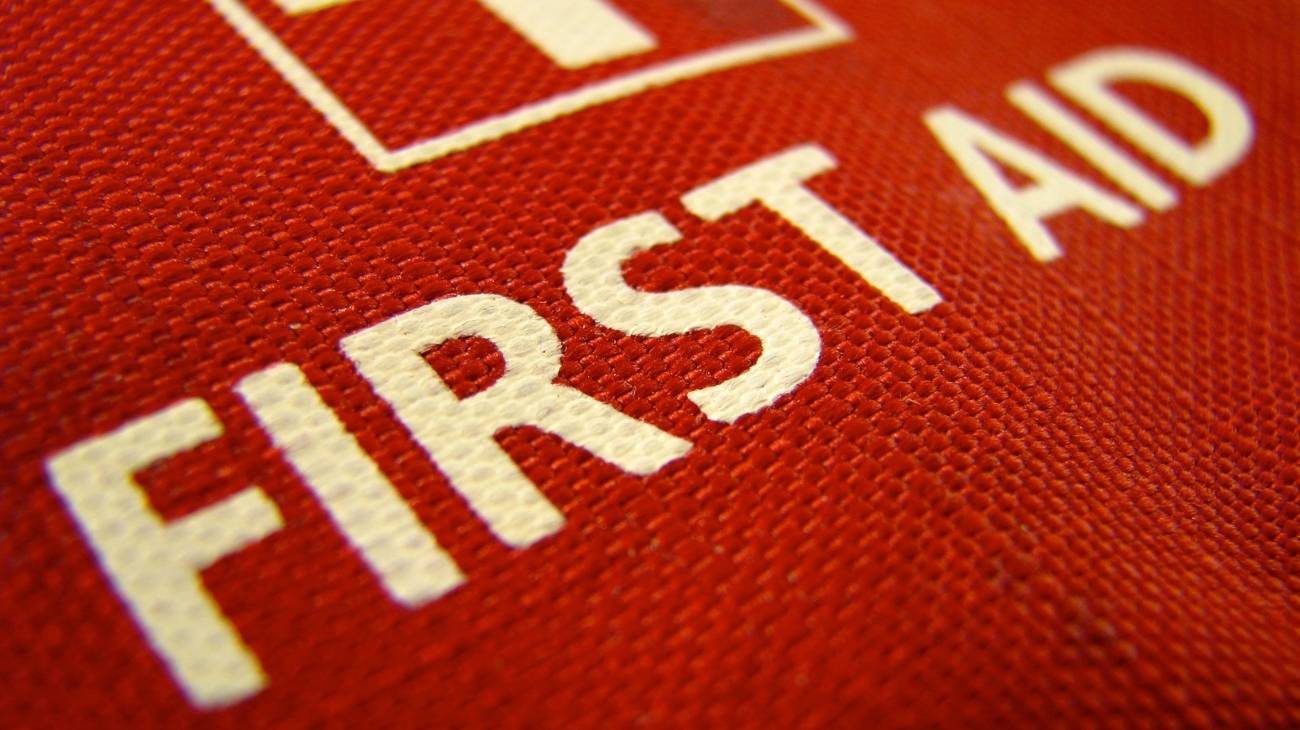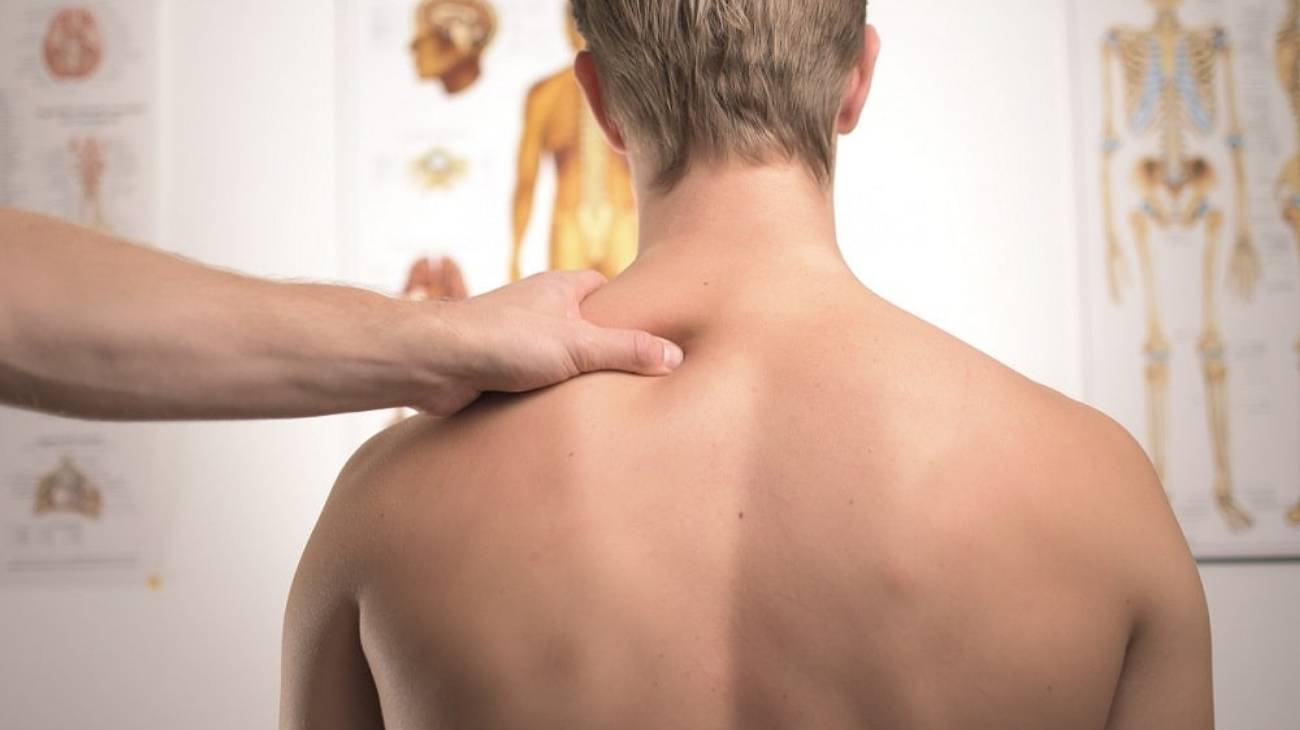- What is electrotherapy and how is it used in physical therapy?
- Classification of electrotherapy: Types of frequencies and currents
- What are the benefits of using electrotherapy?
- For what type of injuries and diseases is electrotherapy indicated?
- What are the contraindications for the use of electrotherapy?
- What types of electrotherapy equipment and devices are the most common?
- F.A.Q: Frequently Asked Questions
Electricity is an essential element for life, since it allows the execution of an enormous number of nervous processes within the human body as elementary as moving an arm or a leg, feeling the pain of a blow or wound, or the simple need to scratch when something itches the skin.
Today you will learn how electrotherapy uses electrical currents of different frequencies and intensities to stimulate muscle tissues in order to keep them in shape and stimulate the recovery of their tissues during recovery processes.
What is electrotherapy and how is it used in physical therapy?
This is a technique that seeks relief from pain and some physical ailments through the application of electrical and electromagnetic energy, among other variants, through the skin with the use of conductive pads called electrodes. It is a very safe type of therapy and must be applied by a physical therapist specialized in the manipulation of electricity to treat some kinds of ailments.
Classification of electrotherapy: Types of frequencies and currents
The types of frequencies and their currents will determine the success of the therapies. The initial monitoring that the physiotherapist should do does not serve as a diagnosis, but it will be useful to know what type of current and frequency should be used.
Low frequency currents
Low frequency currents in electrotherapy range from 1Hz to 1Khz and are used to adapt the body to sensory stimulation on the nerves and stimulation of the muscle fibers.
- Galvanic: within the low frequency band, this is the most commonly used current. Although it is often uniform, the physiotherapist can also propose interrupted galvanic currents to stimulate muscle fibers and generate electrochemical changes in these tissues. It is applied directly to the skin.
- TENS: this is a type of very low frequency current, more for commercial use because small, portable and safe devices are manufactured so that patients with some experience in electrotherapy can apply some impulses at home and soothe minor pains. These devices are rarely used for moderate or high frequencies.
- EMS: it is often compared to TENS, but this device has a dual use because it is intended for muscle work and nerve stimulation. It is also considered a low frequency equipment and its time of use is shorter, at most 20 minutes of application with their respective breaks.
- Diadynamic: many specialists recommend using this current to habituate the skin before central stimulation, it serves as a local analgesic and are completely safe currents. Patients with shingles feel relief only when applying this frequency. There are at least four types of variants in the use of this current.
- Exponential: in this phase, greater care must be taken because it involves stimulation of the skin with a band of impulses that is measured in milliseconds, usually 2,000 milliseconds. Less time irritates the patient's skin, and too much time causes irregularities in the muscle contractions.
- Faradic: used to stimulate both nerve terminals and muscle fibers. It is applied in a shorter time than the previous currents and only take effect to stimulate healthy parts of the body, they are physical injuries. In case of any pathology, the frequency should be adjusted so as not to cause damage to the fibers.
- Träbert: it differs from the others by alternating types of impulses to achieve greater muscle contraction and increase blood irrigation. In addition, it serves as a preparation in the organism to apply some drugs in the body. It also addresses pain and allows for greater muscle relaxation.
Medium frequency currents
It uses frequencies from 1KHz to 10 KHz, it also seeks to stimulate the nerve terminals and muscle fibers, but for a longer lasting result.
- De D'Journo: this type of current has analgesic properties superior to low frequencies, it seeks to block the pain signals that reach the spinal cord and the brain, in order to give time for drug treatments to take effect and soothe the symptoms of ailments in patients.
- Kotz: directly attacks the irregular functioning of the muscle fibers, allows greater elongation and stimulation of the muscle structure and, as a curious fact, is used as a complementary treatment in case of urinary incontinence by placing intravaginal electrodes and applying this type of current.
- Interferential: used to give greater relief to moderate pain, which cannot be completely controlled with other physiotherapy methods. It works as a powerful local analgesic, but its effect is temporary and usually passes within a few minutes after the end of the electrotherapy session.
High frequency currents
It is the most cautious type of current in terms of its use, it uses frequencies from 500KHz to 10MHz. Its application should not be done directly on the skin because it can cause burns.
- Short wave: this current increases body temperature by increasing the intensity of the magnetic field in deep parts of the body. It does not seek to stimulate nerves or muscle fibers, but only provides the benefits of thermotherapy by improving blood circulation in damaged tissues.
- Microwaves: this is a type of frequency more used among current physiotherapists, it has an analgesic effect and temperature increase in more superficial parts and close to the skin. It is the best treatment to address Achilles tendonitis and epicondylitis, and its heat is more tolerable in people with high sensitivity.
- Diathermy: this is a frequency that generates a positive biochemical change in muscle cells, by increasing the temperature in deep tissues. It adjusts metabolism and relieves inflammation and muscle stiffness, it has longer lasting effects than the previous frequencies.
- D'Ansorval currents: this is a great treatment when sensitive, irritated and inflamed skin is to be treated. In addition, specialists often use this frequency as a form of bactericide. Remember that, in order to achieve these benefits, the therapy must be applied by a qualified professional
Other types of electrotherapy
These types of alternatives to electrotherapies satisfy the different needs of each patient, in terms of pain relief and increase of body temperature in a localized way.
- Infrared radiation: its application is superficial and uses all the heat properties of sunlight and artificial light to offer various benefits to the body such as relief of inflammation, dilation of vessels and veins, and also favors the sweating process to eliminate toxins after sports training, for example.
- Ultrasound: this type of equipment transmits mechanical waves that emit variations in temperature that are imperceptible to people, but have an effect inside the deep tissues. It is a therapy to work on tendon injuries, it favors the healing process and reduces inflammation when it is not chronic.
- Ultraviolet radiation: it is no longer a tissue approach, with this therapy a biochemical change in the cellular structure is sought. It also has an important bactericidal effect when the patient does not achieve results with conventional drugs. These radiations involve photoelectric and photochemical activity in the organism.
- Laser: adjusted correctly the wavelength, the intensity of the laser will determine some cellular changes, so it will have a high penetration in the cellular structures. The physiotherapist will look for biological stimulation and photomechanical stimulation in the patient. The laser intensity must be correctly measured by the specialist.
- Magnetotherapy: this is a technique that seeks to accelerate cellular recovery by causing a reaction in the ions that our body has, these are found in the bloodstream, plasma and various soft tissues. It facilitates the nutrients to circulate better to the muscle fibers.
- Shock waves: these are sound pulses that generate a vibration in the tissues that reduce chronic pain, inflammation associated with physical injuries and tendon discomfort. It is the transmission of energy by means of acoustic waves and does not require anesthesia or any analgesic because it does not cause discomfort to the patient during its application.
What are the benefits of using electrotherapy?
- Anti-inflammatory: the different ways of applying current generate a vasodilatation in the injured area that reduces inflammation by increasing blood flow and allowing more oxygen and nutrients to reach the area where electricity is used. This is one of the great advantages of these techniques.
- Analgesic: pain receptors emit signals that go to the spine and the brain, these signals are neutralized with small and safe electric shocks on the skin. It should be clarified that the therapy does not eliminate pain, but it reduces it enough to try to give relief to patients while basic treatments take effect.
- Muscle rehabilitation: the electric shocks allow the muscles to remain active through vibrations that trigger muscle contractures. At all times, a good rhythm of these contractions must be ensured to prevent the muscles from becoming fatigued and injured.
- Neuro-muscular potentiation: this type of therapy improves the connection between the motor plate, which is the neuromuscular junction, and the fibers of the muscle that performs the action. Each session improves the muscular response to the demands of the person, especially in professional athletes.
- Thermal effect: thanks to the high frequencies, an adequate temperature regulation is obtained, which has the effect of increasing the blood flow in the body to better nourish the muscles and other tissues such as tendons and ligaments. The heat in the body, when used therapeutically, has additional benefits.
- Muscle strengthening: these therapies increase muscle strength by stimulating 50% of the isometric strength of the muscles being worked at that moment. In addition, by bringing more nutrients and activating the fibers, the muscles remain healthy and become more resistant to possible physical injuries.
- Improved drug transport: this benefit is obtained with the dilation of vessels and veins by increasing body heat, although this temperature regulation is localized where the electrodes are located. However, the blood is in constant movement so that nutrients travel better throughout the body.
- Reduction of edemas: the reabsorption of edemas is possible thanks to the fact that the electric currents and the increase in temperature improve the circulatory system. Although it is not magic, the expansion of edema stops and begins to decrease. This result is most noticeable when the injury is mild.
- Pain relief: This relief is best achieved with the application of short waves, which interrupt the signals emitted by the pain receptors to physical injury. Remember that the therapy does not address the root problem, it only provides temporary relief that allows people to continue with their activities.
- Improves wound healing: the function of devices such as TENS is to accelerate the wound healing process by stimulating the production of substances that the body requires to reattach the skin. Although this is a natural process in the body, electricity can accelerate this process.
- Preventive effect: the use of electricity on muscles will reduce the possibility of muscular contractures due to fatigue and excess tension. It is an excellent way for athletes to continue with their training and continue demanding more work to the body.
For what type of injuries and diseases is electrotherapy indicated?
Although electrotherapy has many uses, it is always advisable to be clear about the cases in which it is advisable to apply it.
- Chronic pain: both in neuropathic pain and neurogenic pain, this therapy is highly recommended and without restrictions for risk of worsening these painful conditions. You just have to be clear that an expert is the one who will perform the therapy.
- Disc herniation: although the therapy will not rehabilitate the displaced or deformed disc, it will make the pain less intense. Remember that herniated disc pain is latent and throbbing and can alter the lives of patients who have been suffering from this condition for years.
- Sciatica: this pathology is caused by muscle compression on the nerves of the lower back, the application of electrical currents relaxes the muscle fibers to gradually eliminate the compression generated in the spine.
- Plantar fasciitis: works as an alternative component to reduce inflammation and pain in the plantar arch when the injury is advanced and affects even the way people walk. It allows time to seek permanent solutions to plantar fasciitis.
- Tendonitis: when the tendon is irritated, electrotherapy manages to relax the fibers and reduce the intense pain felt in these cases. But when the tendon is completely ruptured, these frequencies will make the pain more tolerable, although their effects are temporary.
- Carpal tunnel: it is an effective alternative method to reduce pain, increase the functionality of the median nerve and improve the sensitivity of the hand when the syndrome can still be controlled before surgery is necessary.
- Facial treatments: it is an area exclusively to seek skin rejuvenation in the face, by stimulating the facial muscles and avoiding tissue sagging that makes people look older. There are no risks or side effects in this type of aesthetic procedures.
- Parkinson's: although it is not able to reduce the progression of this disease, small electric shocks can achieve in some people that there is less tremor in parts of the body such as the hands. Electrotherapy addresses nerve function and muscle strength.
- Pelvic floor: this is a perineal treatment that achieves less muscle contracture in the pelvic floor, the great benefit is to reduce urinary incontinence and anal incontinence in the elderly.
What are the contraindications for the use of electrotherapy?
- Pregnant women: it is not recommended to use these currents near the abdomen and pelvis during pregnancy. In general, it is preferable not to use electrotherapy at any stage of pregnancy unless suggested and monitored by the gynecologist.
- Infectious conditions: electrical therapies usually cause the reactivation of infectious processes in the skin and internal tissues, therefore their use during infections is not recommended.
- Photophobia: this pathology is associated with damage to the nervous system, electrotherapy does not have positive effects in these cases.
- Electrophobia: this is a mental condition that will prevent the body from being relaxed during an electrotherapy session, so the benefits of a session would be null in patients with electrophobia.
- Psychiatric disorders: electroconvulsive therapies have been used since the 1930's and currently their use has been reduced due to the development of other alternative therapies, in cases when patients do not respond positively to psychotropic drugs.
- Oncological conditions: there are many concerns and doubts about the use of electrotherapy in cancer patients, there has been no evidence that it really works and therefore its application has been discouraged.
- Prostheses: most prostheses are made of metal, which would become a super conductor of electricity and would accumulate a large amount of heat in the skin, causing internal burns.
- Eye, heart and carotid sinus: these parts of the body have very sensitive tissues, even if there are very low frequencies in electrotherapy. Placement of electrodes close to these areas should be avoided.
- People with pacemakers: electrical discharges affect the functioning of pacemakers in people with heart disease, which would put the patient's life at risk. In addition, there would be an unbearable accumulation of heat.
- Thrombophlebitis: in case of this and other vascular conditions, the application of electrotherapy should be monitored by the physiotherapist and the specialized physician. Peripheral circulation is also complicated when receiving electrical charges.
What types of electrotherapy equipment and devices are the most common?
This is the list of the most common devices that you should know if you want to know everything related to electrical pulse therapies.
- Thermometers: in the market there are infrared thermometers that allow to have an accurate record of the temperature of internal tissues, it is a useful tool when you want to generate body heat.
- Magnetotherapy devices: there is a great variety of devices, but they all agree that they favor the regeneration of bone tissues and their use is safe as long as it is monitored by a certified technician.
- Electrodes: they are a kind of pads that adhere to the skin and serve as conductors of electricity in electrotherapy sessions.
- Pressure therapy devices: there are full body devices and others that cover the extremities, their main function is to generate a constant pressure to obtain a better blood circulation.
- Electro-stimulators and TENS machines: These are portable devices that work to relieve pain and keep muscle fibers active. They are for home use because they use low frequency currents.
- Ultrasound: these devices improve the quality of healing and accelerate the recovery of chronic injuries that have not healed well over time. They are used quite frequently by physical therapists.
- Electrotherapy: is a type of stimulation using electrical currents of different frequencies to obtain benefits such as reduction of inflammation and activation of muscle tissues. It must be applied by a professional.
- Infrared: it increases the heat in the superficial tissues to achieve a biochemical change in the organism. Its positive effect is fast and long lasting, as long as there is a correct application.
- Capacitive and resistive diathermy: these are two different ways of heating the internal tissues to increase blood circulation, bring more oxygen to the muscles and keep their fibers nourished.
- Massage devices: are various portable equipment that seek to stimulate trigger points and hot spots where there are contractures and ailments associated with an intense pace of life, such as in the sports world.
- Combined equipment: these are professional devices that can be used to perform electrotherapy, ultrasound and infrared emission to address the same injury from several variants of alternative therapies.
- Iontophoresis: these devices are used to increase the amount of ions in the body, using galvanic currents and the application of drugs locally in the injured area.
- Laser: it is a coherent wave light of a single length that addresses the soft tissues and wounds, it is an ideal therapy to accelerate the healing process.
- Pulse oximeters: is a non-invasive equipment that measures the amount of blood that is concentrated in the tissues, it is used to give clues to physical therapists about how therapies should be.
F.A.Q: Frequently Asked Questions
References
- Watson, T. (2002). Current concepts in electrotherapy. Haemophilia, 8(3), 413-418. https://onlinelibrary.wiley.com/doi/abs/10.1046/j.1365-2516.2002.00613.x
- Pieber, K., Herceg, M., & Paternostro-Sluga, T. (2010). Electrotherapy for the treatment of painful diabetic peripheral neuropathy: a review. Journal of rehabilitation medicine, 42(4), 289-295. https://europepmc.org/article/med/20461329
- Broekmans, T., Roelants, M., Feys, P., Alders, G., Gijbels, D., Hanssen, I., ... & Eijnde, B. O. (2011). Effects of long-term resistance training and simultaneous electro-stimulation on muscle strength and functional mobility in multiple sclerosis. Multiple Sclerosis Journal, 17(4), 468-477. https://journals.sagepub.com/doi/abs/10.1177/1352458510391339
- Watson, T. (2000). The role of electrotherapy in contemporary physiotherapy practice. Manual therapy, 5(3), 132-141. https://www.sciencedirect.com/science/article/abs/pii/S1356689X00903631
- Kroeling, P., Gross, A., Graham, N., Burnie, S. J., Szeto, G., Goldsmith, C. H., ... & Forget, M. (2013). Electrotherapy for neck pain. Cochrane database of systematic reviews, (8). https://www.cochranelibrary.com/cdsr/doi/10.1002/14651858.CD004251.pub5/full
- Watson, T. (Ed.). (2008). Electrotherapy E-Book: evidence-based practice. Elsevier Health Sciences. https://books.google.es/books?hl=es&lr=&id=J_cie1aOiwsC&oi=fnd&pg=PP1&dq=electrotherapy+-cranial&ots=pM744NLMci&sig=EBGw8AXtLh1Jo5PZ2KSrscygJec&redir_esc=y#v=onepage&q=electrotherapy%20-cranial&f=false
- Cheng, R. S. S., & Pomeranz, B. (1986). Electrotherapy of chronic musculoskeletal pain: comparison of electroacupuncture and acupuncture-like transcutaneous electrical nerve stimulation. The Clinical journal of pain, 2(3), 143-150. https://journals.lww.com/clinicalpain/Abstract/1986/02030/Electrotherapy_of_Chronic_Musculoskeletal_Pain_.1.aspx
- Salar, G., Job, I., Mingrino, S., Bosio, A., & Trabucchi, M. (1981). Effect of transcutaneous electrotherapy on CSF β-endorphin content in patients without pain problems. Pain, 10(2), 169-172. https://journals.lww.com/pain/abstract/1981/04000/effect_of_transcutaneous_electrotherapy_on_csf.4.aspx
- Tan, G., Rintala, D. H., Jensen, M. P., Richards, J. S., Holmes, S. A., Parachuri, R., ... & Price, L. R. (2011). Efficacy of cranial electrotherapy stimulation for neuropathic pain following spinal cord injury: a multi-site randomized controlled trial with a secondary 6-month open-label phase. The journal of spinal cord medicine, 34(3), 285-296. https://www.tandfonline.com/doi/abs/10.1179/2045772311Y.0000000008
- Page, M. J., Green, S., Kramer, S., Johnston, R. V., McBain, B., & Buchbinder, R. (2014). Electrotherapy modalities for adhesive capsulitis (frozen shoulder). Cochrane Database of Systematic Reviews, (10). https://www.cochranelibrary.com/cdsr/doi/10.1002/14651858.CD011324/full

